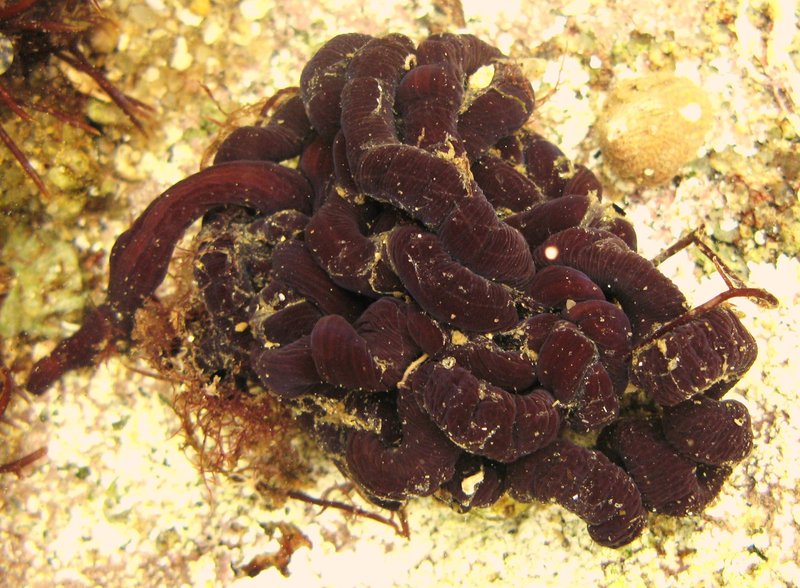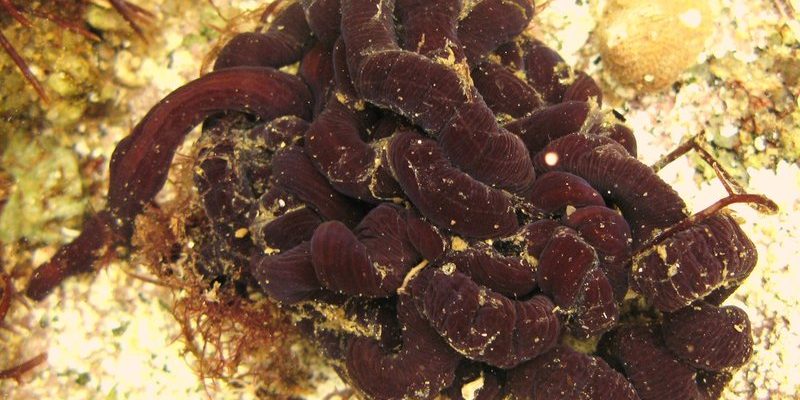
Bootlace worms, also known as *Lineus longissimus*, can be found in shallow waters off the coasts of Europe and surrounding regions. They’ve captivated marine biologists and casual nature lovers alike with their incredible length and vibrant colors. Let me explain a bit more about these unique animals and why they definitely deserve a spot in our wildlife discussions.
What Makes Bootlace Worms Unique?
When we talk about the bootlace worm, the first thing that comes to mind is its size. These worms can grow to astonishing lengths, with some individuals reported to reach over 55 meters (that’s about 180 feet!). To put that in perspective, that’s like stacking up several school buses end to end! You might be thinking that such a long creature would be hard to miss, but bootlace worms typically stay hidden in the ocean floor, often coiling up in what appears to be a tangled mess.
But length isn’t the only fascinating feature of bootlace worms. They boast a variety of striking colors, ranging from bright orange to deep blue. This colorful appearance is thanks to the pigments in their skin, which not only make them visually stunning but also serve as a warning to potential predators. In addition, they’re covered in tiny bristles that help them move through their marine environment. Honestly, they might just be the ocean’s answer to a rainbow!
Habitat and Behavior
Bootlace worms are primarily found in the **cold waters** of the North Atlantic Ocean, particularly around the shores of the UK and Norway. They usually reside in sandy or muddy substrates, thriving in environments where they can easily burrow. This habitat provides them with safety from predators and access to the organic materials they feed on.
Speaking of feeding, bootlace worms are predatory. They use their long, flexible bodies to hunt smaller animals like shrimp and other invertebrates. They can extend their bodies quite a distance, almost like using a fishing line to catch their prey. It’s a fascinating tactic that showcases how adaptable and clever these creatures can be.
You might be interested to know that bootlace worms exhibit a rather interesting behavior when threatened. When disturbed, they can release a cloud of toxins into the water—a clever way to fend off any unwelcome guests. This toxic defense mechanism is another reason why these worms stand out in the marine world.
Reproduction and Lifespan
Reproduction in bootlace worms is quite intriguing. These worms are hermaphrodites, meaning they possess both male and female reproductive organs. When the time is right, they engage in a unique mating ritual which often involves intertwining their long bodies. After mating, they can produce millions of eggs that eventually hatch into tiny versions of themselves.
As for their lifespan, bootlace worms can live for several years—some estimates suggest they can survive up to 10 years in the wild. This extended lifespan allows them ample time to grow and thrive in their ocean habitat, contributing to their already impressive size.
While they might not be the most cuddly or friendly creatures in the ocean, understanding their life cycles helps deepen our appreciation for the complexity of marine life. Honestly, it’s pretty amazing to think about these long, colorful worms living out their lives on the ocean floor.
Ecological Importance of Bootlace Worms
You might be wondering why bootlace worms matter in the grand scheme of things. Well, they play an important role in their ecosystem. As predators, they help regulate the population of other invertebrates, ensuring a balanced marine environment. Their feeding habits contribute to the overall health of the ocean floor by controlling the population of potential prey animals.
Additionally, the nutrients excreted by bootlace worms can enrich their immediate environment, benefiting other marine organisms. This kind of nutrient cycling is essential for maintaining the delicate balance of ocean ecosystems. You could say that bootlace worms are like the unsung heroes of the seabed, playing a crucial role in keeping things in check.
Bootlace Worms vs. Other Common Marine Worms
If you’re curious about how bootlace worms stack up against other marine worms, there are some interesting comparisons to make. For instance, take the **lugworm**, which is significantly shorter and frequently found in intertidal zones. While did thrive, lugworms mainly feed by burrowing into the sand and filtering organic debris. In contrast, bootlace worms rely more on predation, showcasing a different feeding strategy.
Another common marine worm is the **polychaete**, known for its colorful bristles and segmented body. While both they and bootlace worms share some similarities, polychaetes can vary greatly in size and habitat preferences. If you’re keeping score, bootlace worms definitely win the title for the longest!
It’s also worth noting that bootlace worms are part of a larger family of **nemerteans**, which are known for their unique characteristics like a proboscis (think of a long, tube-like appendage used for hunting). This distinguishes them from other worm species, making them a fascinating subject of study for marine biologists.
How to Spot a Bootlace Worm
If you’re ever near coastal waters and want to see a bootlace worm in its natural habitat, there are a few tips to keep in mind. First, look for areas with soft sandy bottoms where these worms tend to burrow. They often resemble squiggly lines or coiled strands when present. Spotting them can be tricky since they usually blend in with the substrate.
If you’re diving or snorkeling, be sure to keep an eye out for their vibrant colors. While they’re more likely to be hidden, you may occasionally catch a glimpse of their impressive length as they navigate through their environment. Remember to respect their habitat and observe from a distance—no need to disturb these magnificent creatures!
The bootlace worm is a remarkable example of nature’s creativity and diversity. With their incredible length, vibrant colors, and unique behaviors, they capture the imagination of anyone who learns about them. Despite their somewhat slimy appearance, there’s so much to appreciate when it comes to these giant invertebrates.
Understanding bootlace worms not only expands our knowledge of marine life but also reinforces the importance of preserving their habitats. As we continue to explore and protect our oceans, creatures like the bootlace worm remind us of the **wonders** that lie beneath the waves. Next time you think about the ocean, take a moment to appreciate the hidden giants like the bootlace worm that help make it such a vibrant and complex ecosystem.

